
This post has been updated to correct the spelling of CNA analyst Joshua Tallis’ last name.
Public excitement and relief greeted the March arrival of the Navy’s hospital ships in Los Angeles and New York City for their COVID-19 relief mission. But the excitement faded as the ships treated fewer than expected COVID-19 patients and left for their homeports with muted fanfare.
USNS Mercy (T-AH-19) left the port of Los Angeles on May 15 after treating only 77 non-infected patients. The Norfolk, Va.-based USNS Comfort (T-AH-20) had returned to Virginia two weeks earlier after treating 182 patients in its month in New York City.
The missions in New York and Los Angeles and the few patients treated has reignited lingering questions about the future of the converted supertankers in their fourth decade of naval service.
Built in the Cold War for mass casualties in a ground campaign that never happened, Mercy and Comfort have never been used to their fullest extent even when deployed for major natural disasters like 2005’s Hurricane Katrina in the U.S. Gulf Coast.
For nearly two decades, the Navy has grappled with replacement concepts for the hospital ships. It’s eyeing retirements for the ships in 2035 and 2036 under its long-range shipbuilding plan, but those projections are far from certain.
Mission essential?

The white-hulled, 894-foot-long ships were designed with expansive surgical, laboratory and intensive-care facilities and 12 operating rooms. When deployed, about 70 civilian mariners operate each ship, and the embarked MTF’s size is dictated by the mission and beds planned, usually for 250 to 500 patients. Each ship can support a 1,000-bed capacity by double-bunking beds if needed.
It was those large accommodations that raised expectations the ships would relieve hospitals’ patient burdens in New York and Los Angeles. When Comfort was sent to New York City, dire estimates predicted hospitalizations at double the city’s 50,000-bed capacity. Comfort was part of the military’s support that included a federal medical station in the Jacob Javits Convention Center.
But neither ship came close to reaching capacity, prompting scathing headlines and social media criticism that the deployments were unnecessary and politically driven. Both New York’s and California’s governors had requested the hospital ships, and officials praised the ships’ early medical support. Stay-at-home orders resulted in fewer trauma cases and infected patients sent to the ships. “Mercy and its highly-trained medical personnel… was critical to our ability to respond in the first stages of the pandemic,” Mark Ghilarducci, director of California’s office of emergency services, said in a statement.
New York Gov. Andrew Cuomo was blunt in defending the mission to the nation’s virus hot spot. “Was it worth it to have the Comfort here to help 172 people? If you were one of those 172 people, and that ship may have saved your life, they’d say, you’re darn right it was worth it,” Cuomo said last month. That number “is nothing to be trifled with.” (The ship left after treating 182.) “I believe the Comfort not only brought comfort but saved lives,” he added.
The COVID-19 support mission “is a different type of care than the ship is designed for. We’re not patching bullet holes up and sending an 18- or 19-year-old Marine down into a berthing area and say, hey when you’re better we’ll send you ashore… So we had to tailor it to people who were brought in to meet those needs,” Capt. Joseph O’Brien, Joint Task Force New York’s commander, told USNI News before Comfort left New York. “I think we were able to adapt during each phase of the mission to make sure that we had the capability that we needed to provide relief to the hospitals that were up here.”
“If things had gone bad…. Comfort and Mercy being there gives you the cushion that you’d want,“ Sal Mercogliano, a merchant mariner and associate professor of history at Campbell University, told USNI News. “I think the best thing in the world is they don’t fill up with patients.”
As of Thursday, both ships were in “Ready 5” reduced operating status with a smaller crew of civilian mariners and Medical Treatment Facility staff that stay with the ship when not deployed.
“They are doing routine maintenance,” Tom Van Leunen, a Military Sealift Command spokesman in Norfolk, told USNI News. “They’re not doing anything that could interfere with the ships if they would have to get underway.”
Most of the 800 to 1,100 staffers on the Medical Treatment Facilities that deployed on each ship have returned to their home medical centers and clinics, Van Leunen said.
“We’re told this mission is over, but it doesn’t mean the mission is over,” he said, noting that the ongoing pandemic and upcoming annual hurricane season could cause the ships to get back underway.
Both ships do recurring deployments and exercises that involve humanitarian aid and medical exchanges, as Comfort did last summer in SOUTHCOM. Whether either is redeployed for a new round of COVID-19 support or to aid U.S. foreign partners dealing with the pandemic remains to be seen.
Symbolic missions
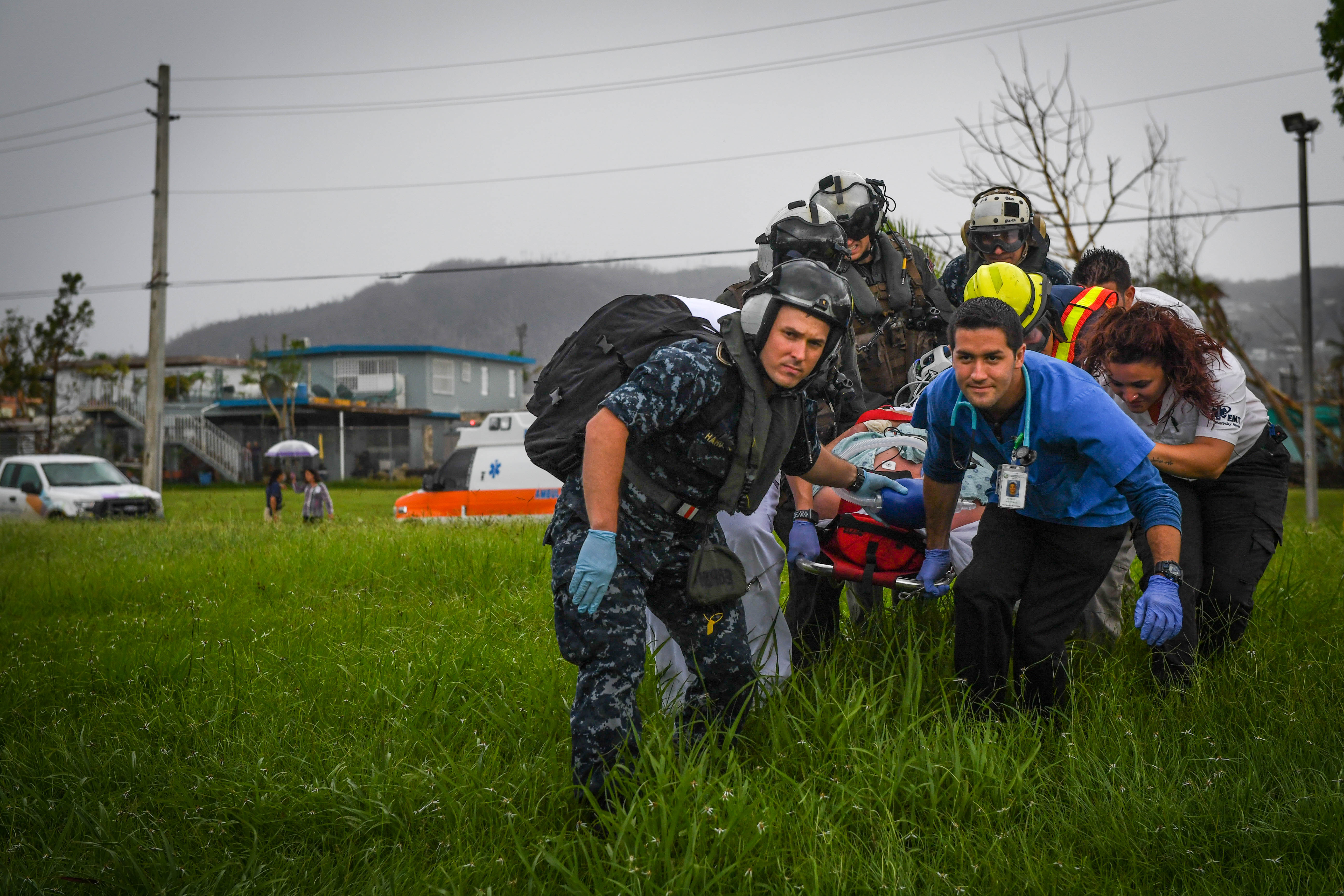
The Navy spent $550 million in the late 1980s to refit San Clemente-class supertankers into floating hospitals to treat and evacuate injured and wounded troops in wartime. Comfort and Mercy have spent more time doing humanitarian assistance, disaster relief and civilian-support missions than their primary mission of evacuation and treatment of wounded and injured troops from the combat zone.
Comfort deployed Jan. 6, 2003, bound for the Persian Gulf ahead of the U.S. invasion of Iraq. During a five-month deployment, its MTF treated 700 troops and Iraqi civilians. Mercy and Comfort deployed in 1990 for Operations Desert Shield/Desert Storm and returned in 1991 after Comfort treated 8,700 U.S. and Iraqi patients, while Mercy treated nearly 700 coalition forces.
Over the years, the hospital ships have deployed to several disaster-response missions and humanitarian missions, but few fully utilized the embarked MTF to its 500- or 1,000-bed capability. So do hospital ships remain must-haves, even when mission expectations and on-scene needs don’t match up?
Retired Army Lt. Gen. Russel L. Honoré, who led Joint Task Force Katrina after the 2005 hurricane struck the Gulf Coast, said military leaders must find the balance in how hospital ships are deployed. “They’ve got to find that sweet spot, because the readiness of the ship is to make sure that it’s not just a symbolic bullshit,” Honoré told USNI News. “In other words, let’s not sit there for another month and take care of four or five patients.”
“You send it when it is needed,” Honoré said, “but you need to get it out as soon as it is not needed. And every day we delay, we chip at the ability of it to deploy the next time.” Still, Comfort‘s deployment to New York City “gave a lot of people a sense of confidence and reminded folks that only in America you’d see such capacity available, and it reminds the world,” he said, adding, “I would continue to maintain the ships.”
Echoes of Katrina
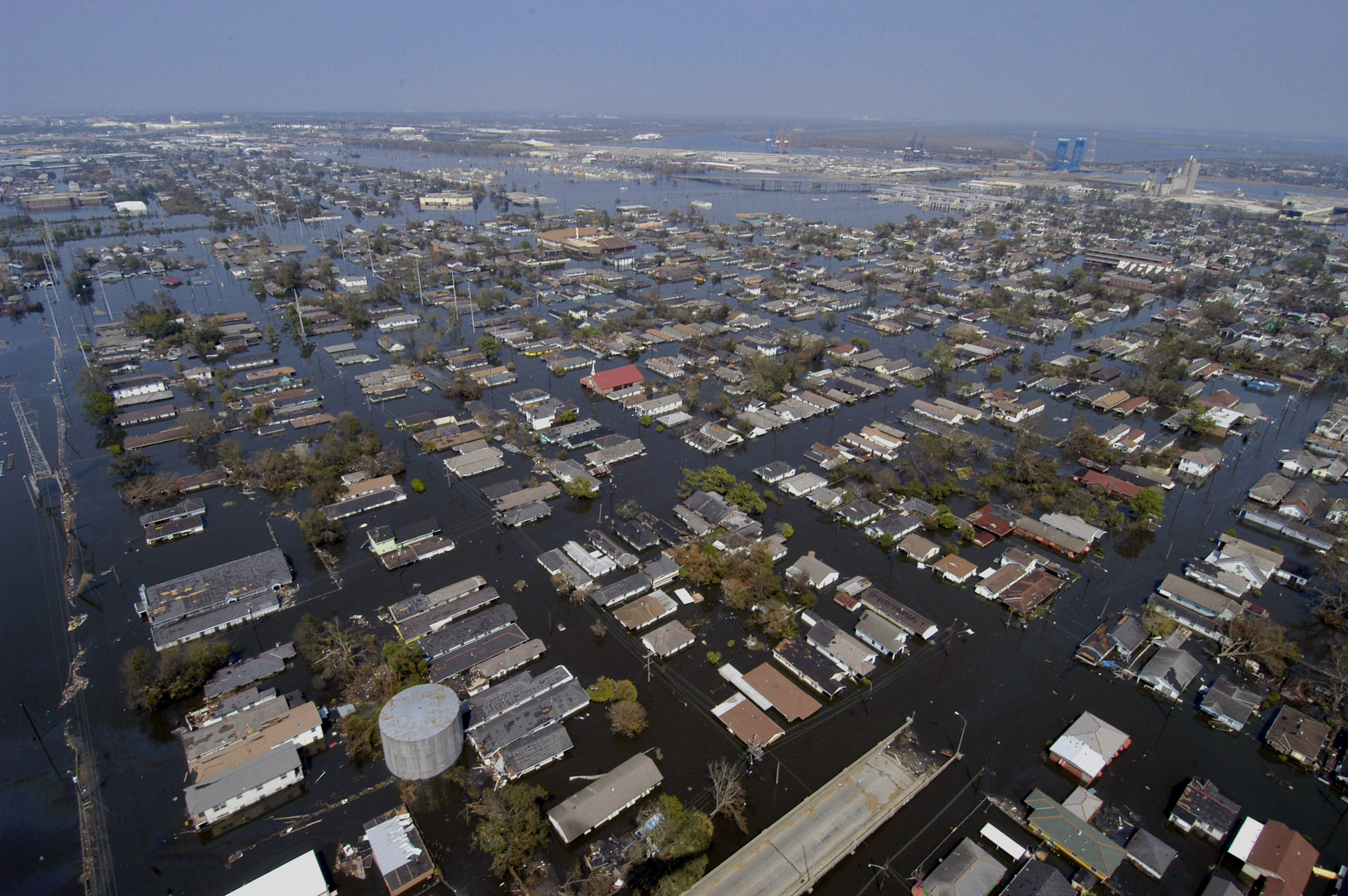
The dearth of patients treated in Los Angeles and New York echoed Comfort‘s experience after Hurricane Katrina struck Louisiana and Mississippi on Aug. 29, 2005. Failed levees in New Orleans worsened the city’s flooding, forced massive evacuations and left thousands stranded.
Comfort got underway with an 500-member MTF staff for a 250-bed hospital as a flotilla of 20 ships and helicopters quickly responded. Comfort’s staff treated 1,258 patients aboard ship in Pascaguola, Miss., and about 7,000 patients were seen at supported clinics ashore over an 11-day period, according to a 2006 CNA report on the Navy’s response. The ship left Pascagoula, reached New Orleans on Sept. 29, and berthed at an old wharf on the Mississippi River in the Lower Ninth Ward, rather than the busier central business district.
It was a short mission. Comfort left New Orleans on Oct. 8 and returned to Baltimore after treating just 102 patients aboard and none at ashore facilities, according to the CNA report. That was fewer than the 1,879 patients treated by Navy medical personnel aboard a half-dozen gray hull ships that deployed to New Orleans and Biloxi, Miss. Someone scrawled the words “Operation Indecision” on a Comfort bulkhead, The Baltimore Sun reported at the time, alluding to frustration with the ship’s reassignments and delays in treating patients.
An Army field hospital set up in New Orleans’ convention center saw more patients, Honoré said. “There was no one down there for them to service.”
“In hindsight, maybe we didn’t need the Comfort. But from the time we ordered it, we needed it,” he said. “But things change along the way. Situations change,” he said. “We didn’t know if there’d be something else. We had plants that were on fire. We had parts of the city on fire… The city did not have the first-response capacity, and much of the city was flooded. So having that big, bad hospital in there was something that if something really bad happened in St. Bernard (Parish) or even Mississippi, having that Level I trauma there was significant. By the time it arrived, we had over 200 helicopters. That was a peace of mind. Did we pay a helluva price for it? Yeah.”
Limits and replacements
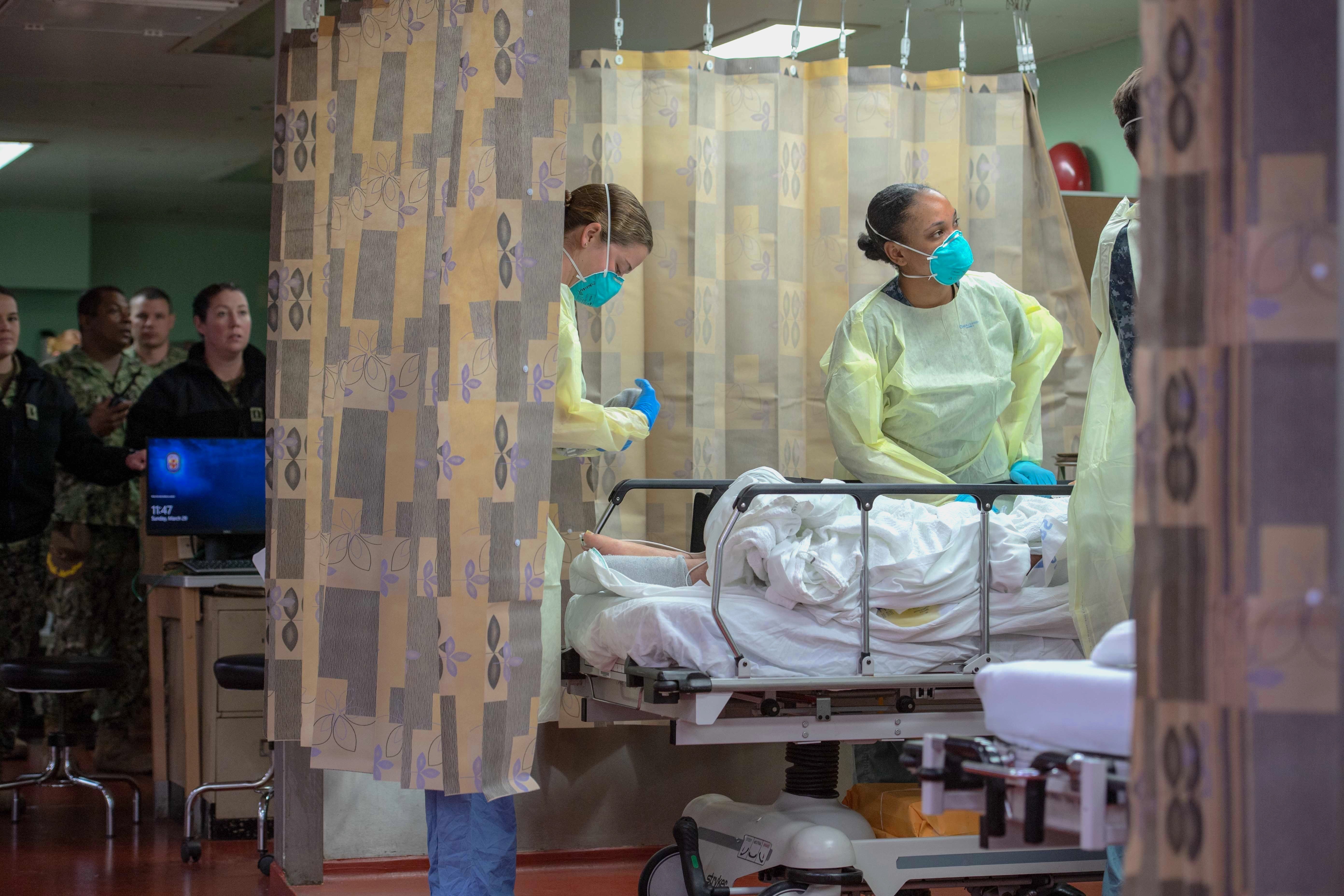
The ship’s trauma facilities provide 24-hour care and can self-sustain for 30 days when deployed. “They are self-contained. They provide their own water. The mobility of them is the biggest key,” Mercogliano said. “If tomorrow Boston hits hard, or Seattle hits hard, you can literally throw lines off, fire up the boilers and off you go, and you’ll be there in a few days.”
But the Mercy-class ships have limitations.
Deployment means a personnel drain elsewhere. “Hospital ships are not ambulances sitting in the fire station ready to go. It takes five days to get going, and that’s the best case scenario,” Mercogliano said. “By their nature, you can’t have them loaded, ready to go. The personnel aren’t on them. The perishables aren’t on them.” For Katrina, the Navy pulled doctors, nurses and technicians from Portsmouth Naval Hospital in Virginia and National Naval Medical Center in Bethesda, Md., the latter which was handling combat casualties from Iraq and Afghanistan. “Everybody going on that ship is coming from a clinic or a unit,” Honoré said. For COVID-19, Mercy pulled personnel from 22 commands to staff its MTF, vacating positions that might have to be back-filled.
Infection control is limited. While Mercy and Comfort have decontamination areas, the open-bay design and single ventilation system doesn’t allow for separation of infected patients on ship without risking other patients and staff. That hampered treatment of patients infected with the coronavirus called SARS CoV-2. While “the deployments are important symbols of mass mobilization, their role in increasing healthcare capacity is likely very limited,” Joshua Tallis, a CNA research scientist, wrote March 23 on its blog, adding, “the ships are not specially equipped to handle quarantined patients.”
The ship is huge. Its large size enables a stabler, at-sea platform important for surgical and patient care. But Mercy and Comfort can’t pull into every pier or port, and the ships’ 33-foot draft limits the reach in shallower areas, so they often anchor offshore and patients are moved by boat or helicopter. “They’re really unmanageable ships in some ways. They’re just so hulking big,” Mercogliano said. He argued for new hospital ships in Proceedings this month.
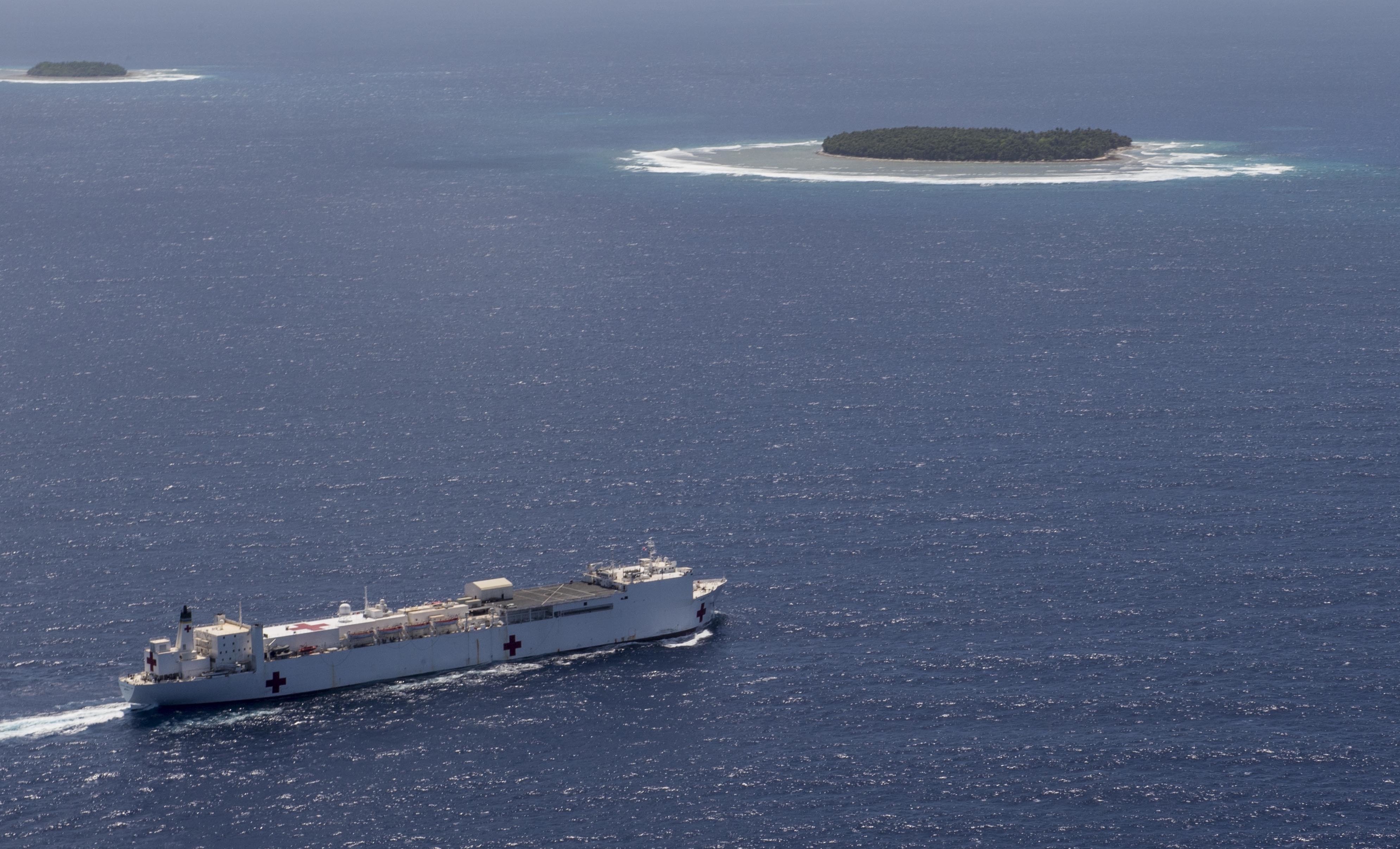
The flight deck is tight. Mercy and Comfort were designed for most patients to arrive by helicopter, but it’s a tight squeeze on the existing landing zone. Replacement ships or deck expansion would better support simultaneous flights and even the MV-22 Osprey tiltrotor, which would allow for faster patient transfers and from farther distances, and enable the ships to operate farther from shore or a danger zone.
Water and pier access are limited. When pier-side, patients are transported through ramps, but that’s a potential bottleneck and makes for an inefficient flow. Patients are brought to the onboard casualty receiving unit from tender boats to side ports when the ship is anchored offshore, but transport is uncertain in poor weather or rough sea conditions. “The ships are not the easiest to load from the waterline,” Mercogliano said. “They were designed for helicopter ingress and egress.”
Just from their age, Comfort and Mercy will need service life extensions and updates such as larger flight decks to remain viable until their replacements enter the fleet. The Navy has weighed options for a new design or reconfigured platform that most recently includes common hull auxiliary multi-mission platform (CHAMP) design. Previous studies by CNA and the Office of Naval Research explored the concept for a hospital ship replacement. A 2014 ONR concept had a 500-bed hospital in a hull based on a modified San Antonio-class amphibious transport dock (LPD-17) design, an idea similar to a 2002 CNA paper on future deployable medical platforms. Austal USA has proposed its Spearhead-class Expeditionary Fast Transport vessel as a hospital ship platform.
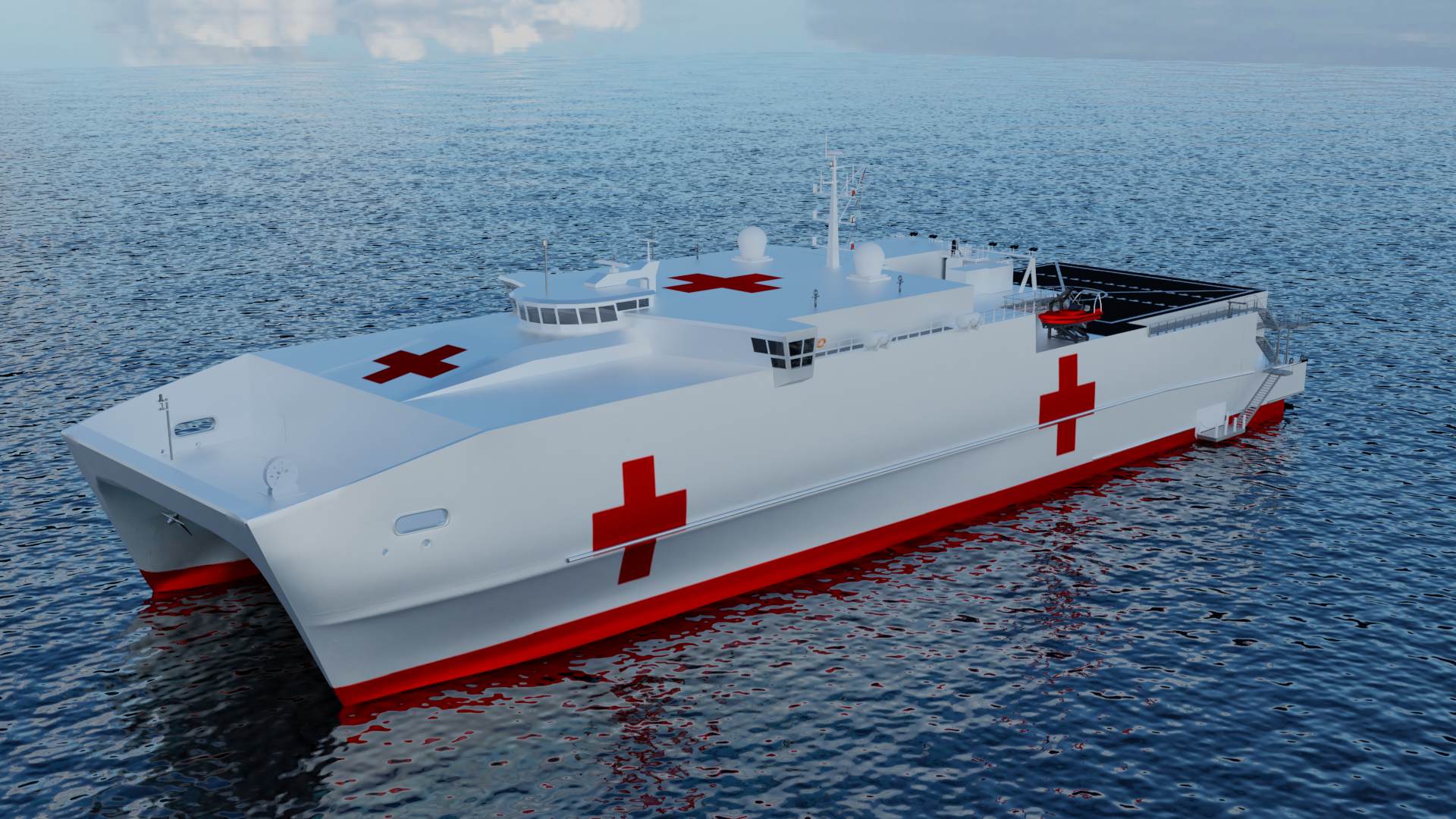
The Navy’s big-deck amphibious ships have large medical departments that can surge to 250 to 500 beds, expansive flight decks and, in most cases, well decks that enable more patient transfers faster than the hospital ships. The smaller LPDs have the advantage of a shorter draft and can access shallower ports and channels that the hospital ships and big-deck amphibs can’t reach without anchoring at sea.
Navy officials will have to decide, at some point, just what’s the best – and affordable – platform to replace the hospital ships, a national strategic capability.
“The carriers, the LHAs and the LHDs provide them all the medical treatment they need. Comfort and Mercy aren’t designed to follow the fleet, so to speak. It’s to move patients off the battlefield, which isn’t really the Navy’s mission,” Mercogliano said. Instead, the Navy should look at smaller, existing ships and perhaps make them configurable so “you could tailor them to the mission that you want them to go to.”





